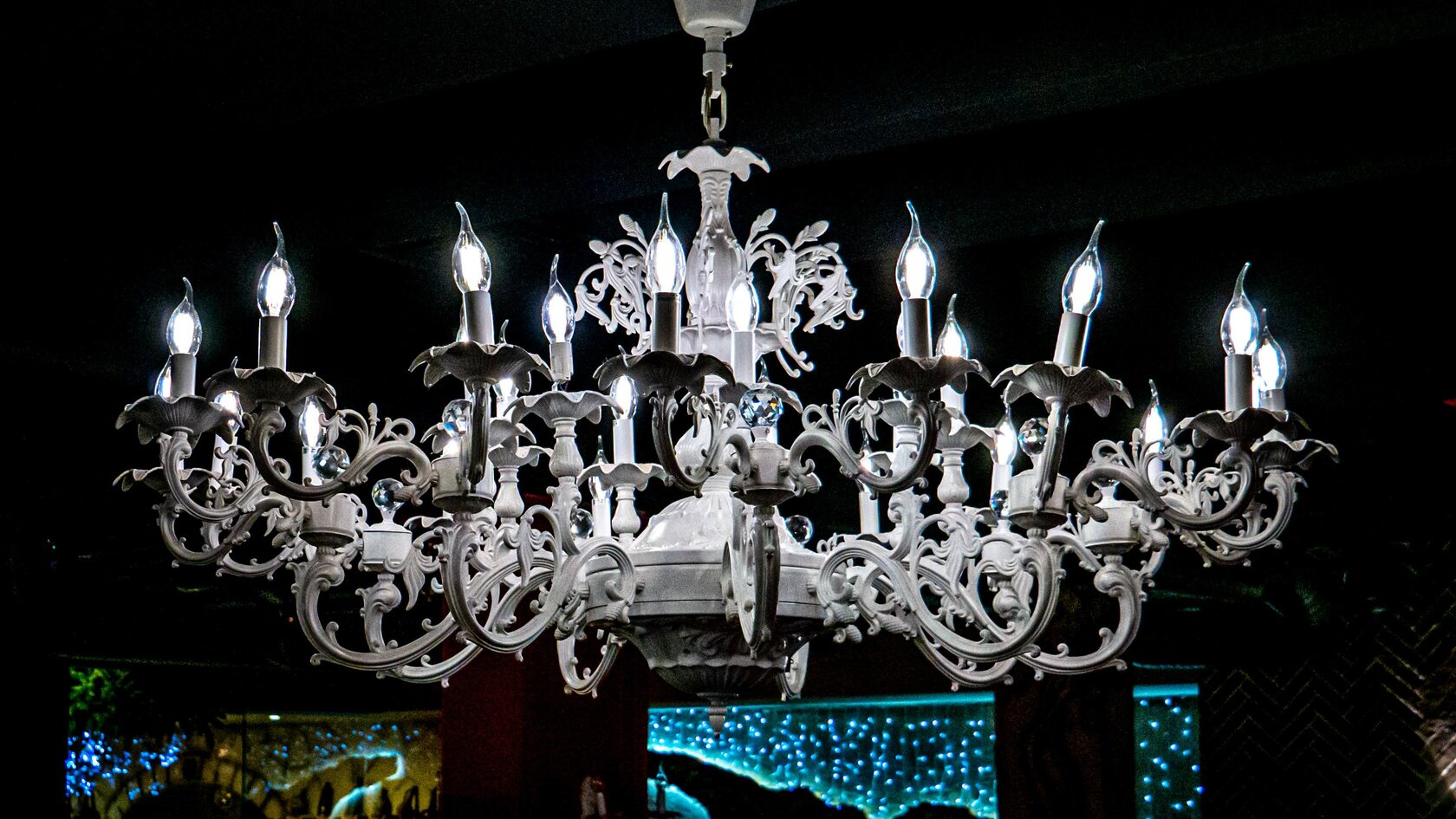How Much Caffeine Does Coffee Have?
It’s easy to find an “average” caffeine content for a “cup” of coffee on the internet, with the most common figure being 95 milligrams of caffeine per 8-ounce cup.
Unfortunately, this isn’t terribly meaningful, since hardly anyone actually drinks a literal 8 fluid ounces of coffee at a time. For comparison, a grande at Starbucks is 16 ounces, and a tall is 12 ounces.
Also, averages can be highly misleading. For example, in a roomful of people—half of whom are 50 years old and the other half are 10 years old—the average age in the room is 30 years. But of course, not one single person in the room is actually 30 or anywhere close to it.
To get around this problem, we’ll just use Starbucks coffee as a yardstick. Everyone drinks it, we’re all familiar with the sizes, and the info on its caffeine content is widely available. Packaged or canned supermarket coffees, like Folgers, will contain less caffeine per equivalent serving, and instant coffee even less.
Caffeine Content of Decaf
The two main types of coffee are espresso and brewed coffee. A standard espresso drink, like a latte or cappuccino, will contain two shots of espresso, each with 75 milligrams of caffeine, for a total of 150 milligrams. This is true for grande and venti drinks at Starbucks. Tall espresso drinks (12 fluid ounces) contain a single shot.
A shot of decaf espresso contains about 10 milligrams of caffeine, so a grande or venti decaf latte will contain 20 milligrams.
Turning to brewed coffee, a grande blonde roast (16 ounces) drip coffee at Starbucks contains 360 milligrams of caffeine, and a Pike’s Place blend contains 310. You might be surprised to learn that brewed coffee contains more caffeine per drink than espresso drinks, but it’s true.
Note that darker roast coffees have less caffeine, as the roasting process burns some of it off. Conversely, because the decaffeination process also removes flavor, decaf coffees are roasted longer and darker to make up for the lost flavor.
That’s why there is no such thing as a decaf blonde roast. But a grande decaf Pike’s Place brewed coffee contains 25 milligrams of caffeine. One way of thinking about it is that it contains the equivalent caffeine of about two sips of a regular Pike’s Place (assuming a “sip” is about a tablespoon).
Как делают кофе без кофеина
Во всех современных способах декофеинизации зеленые кофейные зерна сначала замачивают в воде или обрабатывают горячим паром. А вот дальше технологии различаются. Рассмотрим наиболее популярные.
Швейцарский метод
Этот способ получения кофе без кофеина был изобретен в 1979 году. Его еще называют «швейцарской водой». Сначала подготавливают партию зеленого кофе, предварительно вымоченного в горячей, но не кипящей воде. Это позволяет зернам раскрыться, отдавая воде свои вещества, в том числе и кофеин. А затем полученный экстракт пропускают через систему угольных фильтров.
Молекулы кофеина сами по себе довольно крупные, поэтому они задерживаются в фильтре, а остальные свободно через него проходят. Получается экстракт с правильными вкусоароматическими свойствами, но уже без кофеина.
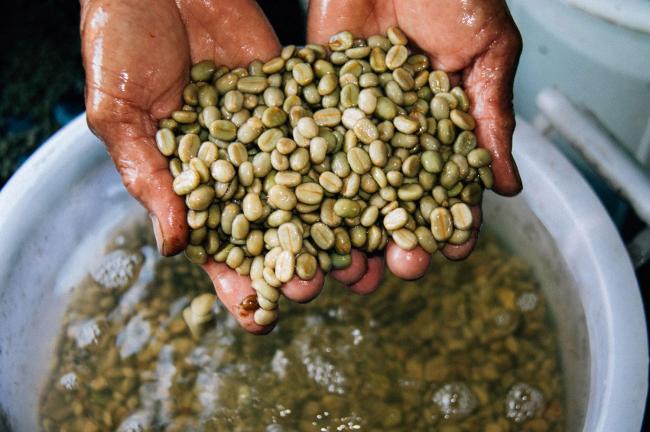
Затем следующую партию зерен замачивают в полученном экстракте: кофеин из зерен постепенно переходит в экстракт, а вещества, влияющие на вкус и запах, остаются в зернах, потому что раствор ими уже насыщен. С первого раза обычно не удается удалить весь кофеин, поэтому процедуру повторяют.
Швейцарский метод не самый быстрый и дешевый. Такой кофе обычно стоит дорого и редко встречается в России. Однако декофеинизированный этим способом напиток сохраняет максимум вкуса, аромата и полезных веществ, которые присутствуют в необработанном кофе.
Традиционный метод
Один из наиболее популярных способов удаления кофеина, который использует большинство производителей. Его еще называют прямым, европейским или обычным. Именно такой декофеинизированный кофе чаще всего можно купить у российских обжарщиков или в супермаркетах.
При традиционном методе кофейные зерна сначала обрабатывают горячим водяным паром. Обычно такая процедура длится около получаса. Затем обработанные зерна, чтобы удалить кофеин, замачивают в растворителе, только вместо вредного бензола используются этилацетат или метиленхлорид. Наиболее безопасным считается первый — это вещество получают из фруктов или тростникового сахара.
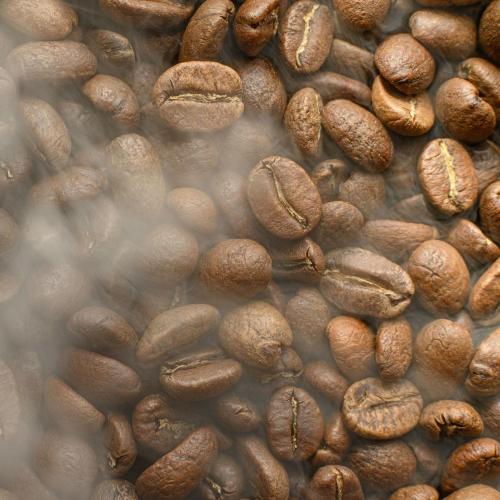
Способ с диоксидом углерода
Диоксид углерода или углекислый газ в нормальном состоянии — бесцветный газ без вкуса и запаха. Он в больших количествах присутствует в атмосфере Земли и имеет химическую формулу CO2. То есть его молекула состоит из одного атома углерода и двух атомов кислорода.
Считается, что декофеинизация с применением диоксида углерода — самая прогрессивная и безопасная. В камеру с кофейными зернами поступает сжиженный углекислый газ, который и выступает в роли растворителя.
Правда, такой способ получения декофеинизированного кофе дорог, потому что требует весьма недешевого оборудования.
What We Learned
Evaluating Coffee Required Multiple Brew Methods
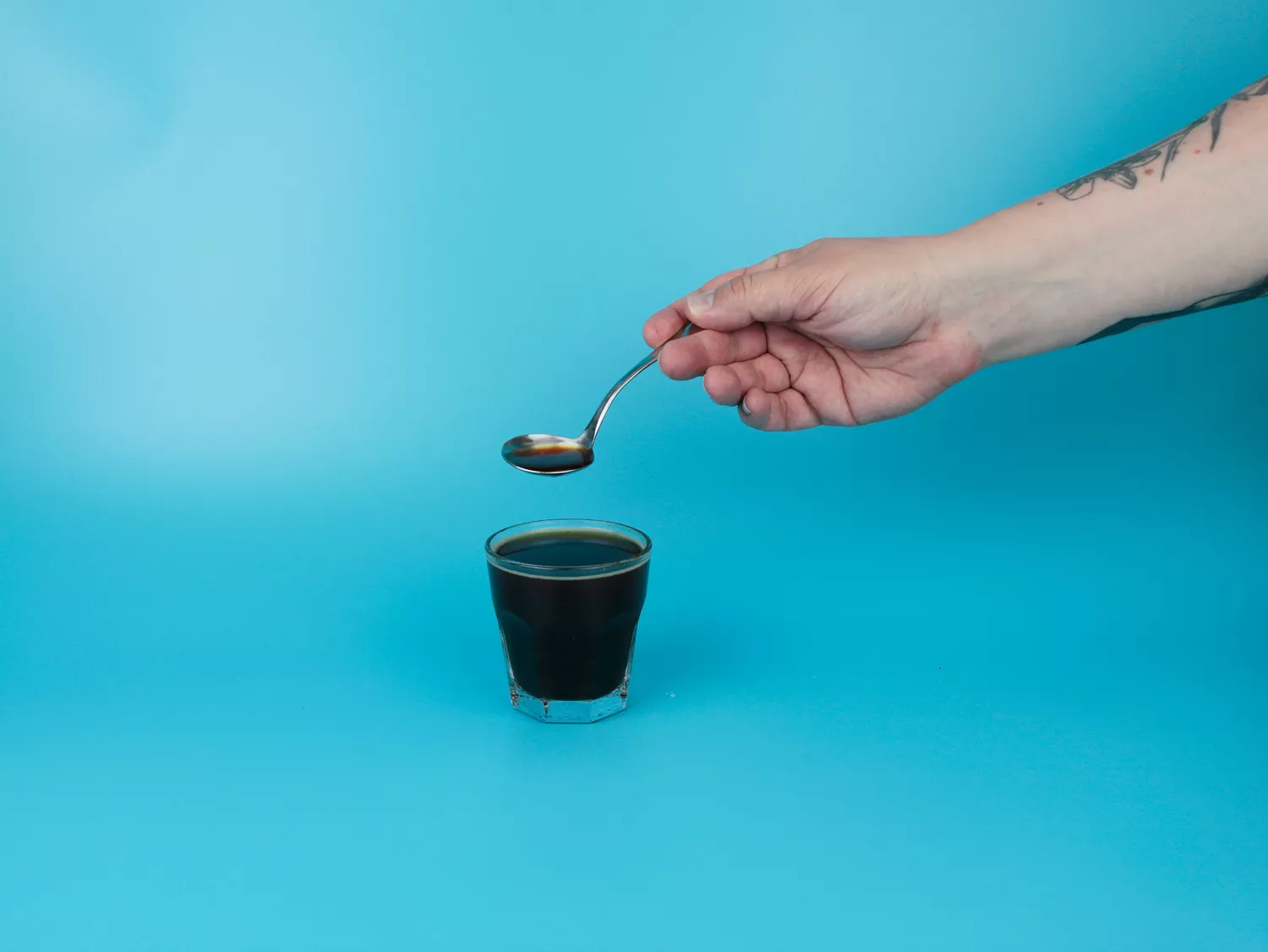
Even though cupping is a standardized tasting method, we also brewed batches of drip coffee for a more thorough evaluation.
Serious Eats / Jesse Raub
Cupping is a great way of tasting coffee because you can brew every coffee the exact same way at the same time for easier comparison. Because the grounds sit and brew in the glass the entire time, it’s a great way to extract everything from a coffee so you get a full perspective on its flavor profile. Brewing with a paper filter, however, helps clean up each coffee’s flavor profile and is a better representation of how people will taste the same coffee at home. By using both brew methods in our coffee evaluation, we were able to make sure our winning coffees were truly excellent.
The Best Coffees Tasted Great No Matter How We Brewed Them
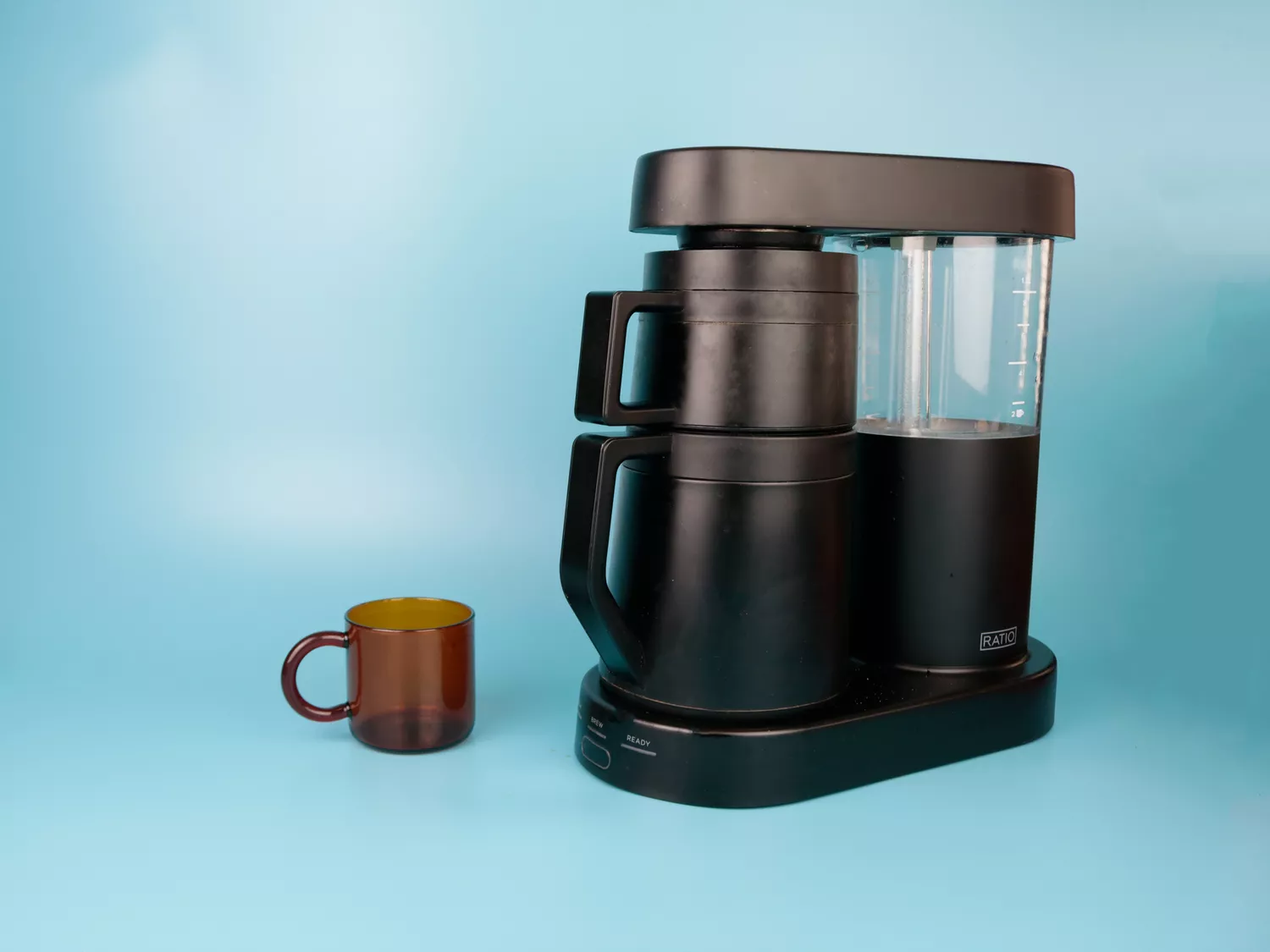
Serious Eats / Jesse Raub
Our top picks consistently came out on top in both our cupping and brewing tests. We thought Counter Culture Coffee’s Slow Motion Decaf Blend and Onyx Coffee Lab’s Decaf Colombia Huila were both really delicious no matter how we brewed them. Other coffees were less consistent. La Colombe’s Luna Azul Decaf was harsh and bitter during the cupping, but showed more sweetness and balance when it was brewed. Kicking Horse Coffee Decaf Blend was the opposite: on the cupping table we thought it had a nice sweetness, but once brewed, it showed burnt, woody flavors that were unpleasant.
Freshness Mattered (And You Should Buy Whole Bean Coffee)
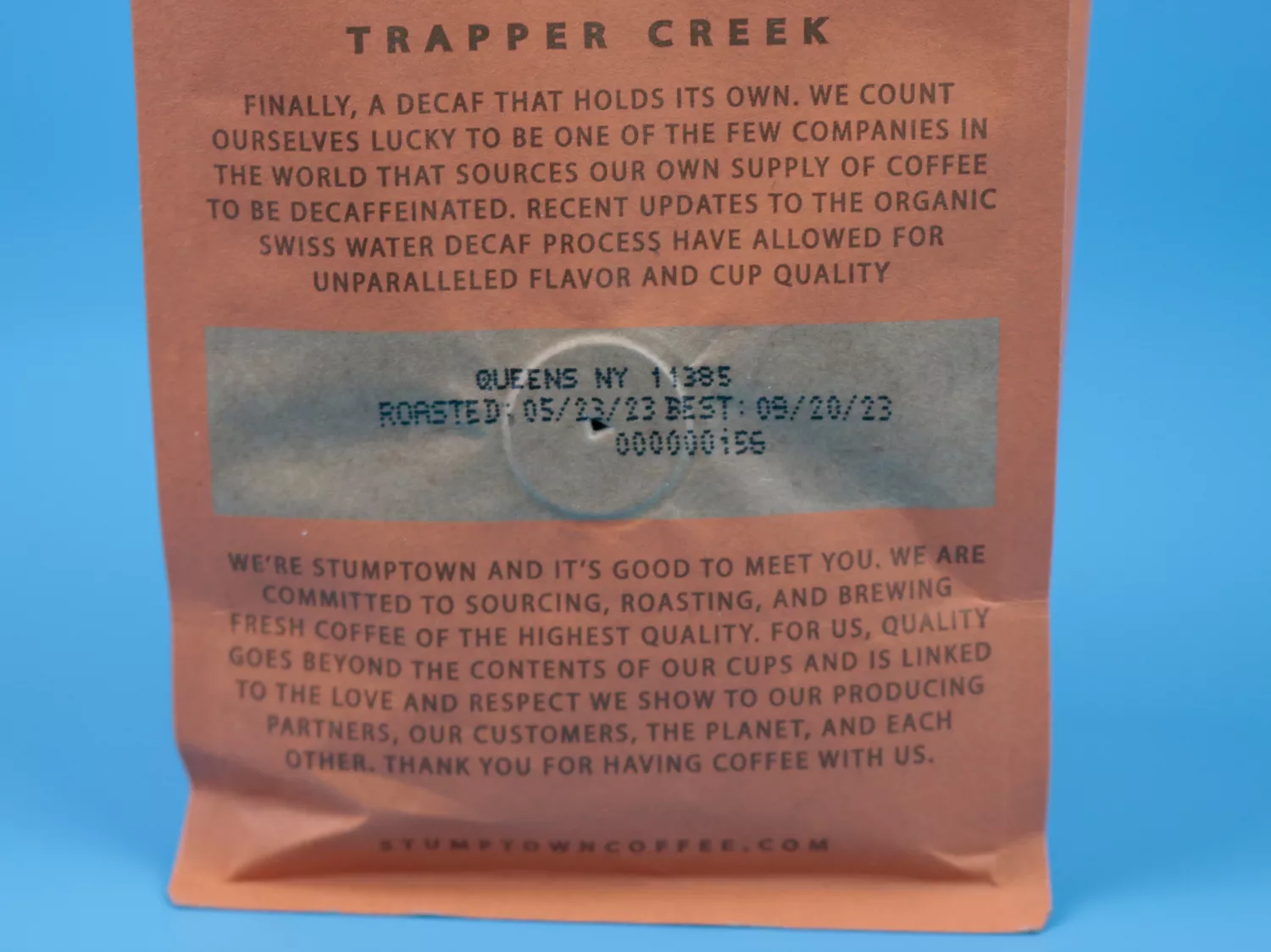
We preferred roasters that listed a roasted on date and not just a best by date.
Serious Eats / Jesse Raub
All of our top picks featured a roast date somewhere on the bag so we could see how fresh they were. Roasting coffee creates hundreds of volatile aromatic compounds and carbon dioxide that keep coffee tasting fresh and vibrant up to 20 days after the roast date. Some roasters—like Caribou Coffee and Allegro Coffee—only have a “best by” date, but don’t list their criteria for how long after roasting that date is.
However, roast date isn’t the only indicator of freshness—grinding coffee exposes more surface area, and causes aromatics and CO2 to degas within minutes instead of weeks. The worst-performing coffees we tasted (including Folgers, Maxwell House, and Starbucks) were all pre-ground and tasted noticeably flat and stale in comparison to freshly roasted coffee that was ground immediately before brewing.
Roast Descriptors Weren’t Always Accurate
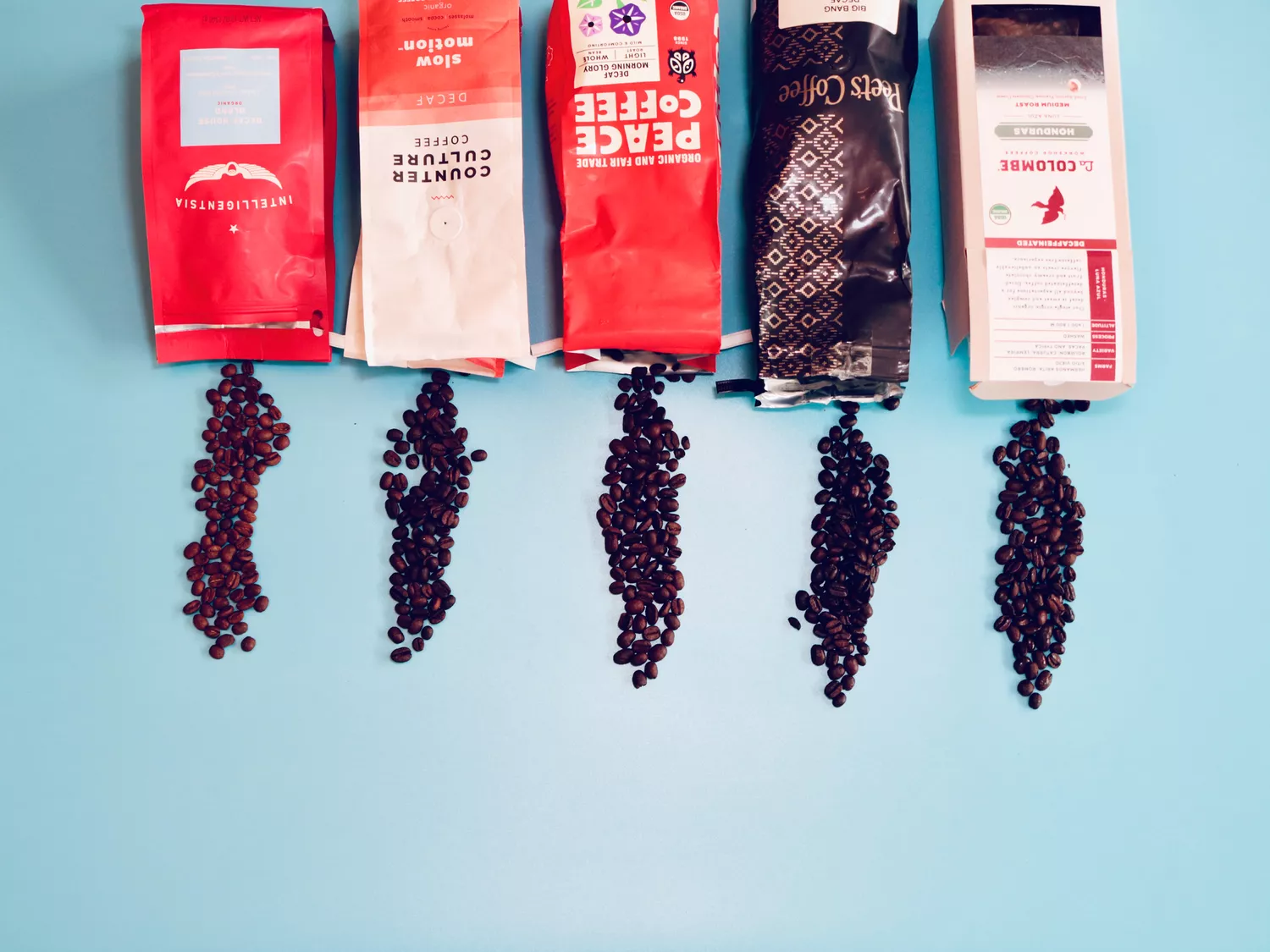
Serious Eats / Jesse Raub
Coffee roasting companies tend to use roast descriptors based on their own internal roast-level standards, which can be confusing. Peace Coffee Roasters’ Morning Glory Blend is listed as a light roast on the bag, but when we looked at the coffee there were visible oils on the surface—an indicator that the coffee is more likely a darker roast. Same with Peet’s Coffee’s Decaf Big Bang Blend, which is labeled as a medium roast and had a considerable smoky flavor while being visibly darker than other medium roasts we tested. That didn’t affect our enjoyment of these coffees—both of them were top picks—but it is something to be aware of. Just because a coffee label lists a roast level doesn’t mean it’ll align with your normal preferences.
Certifications Were Good, But Didn’t Affect Flavor
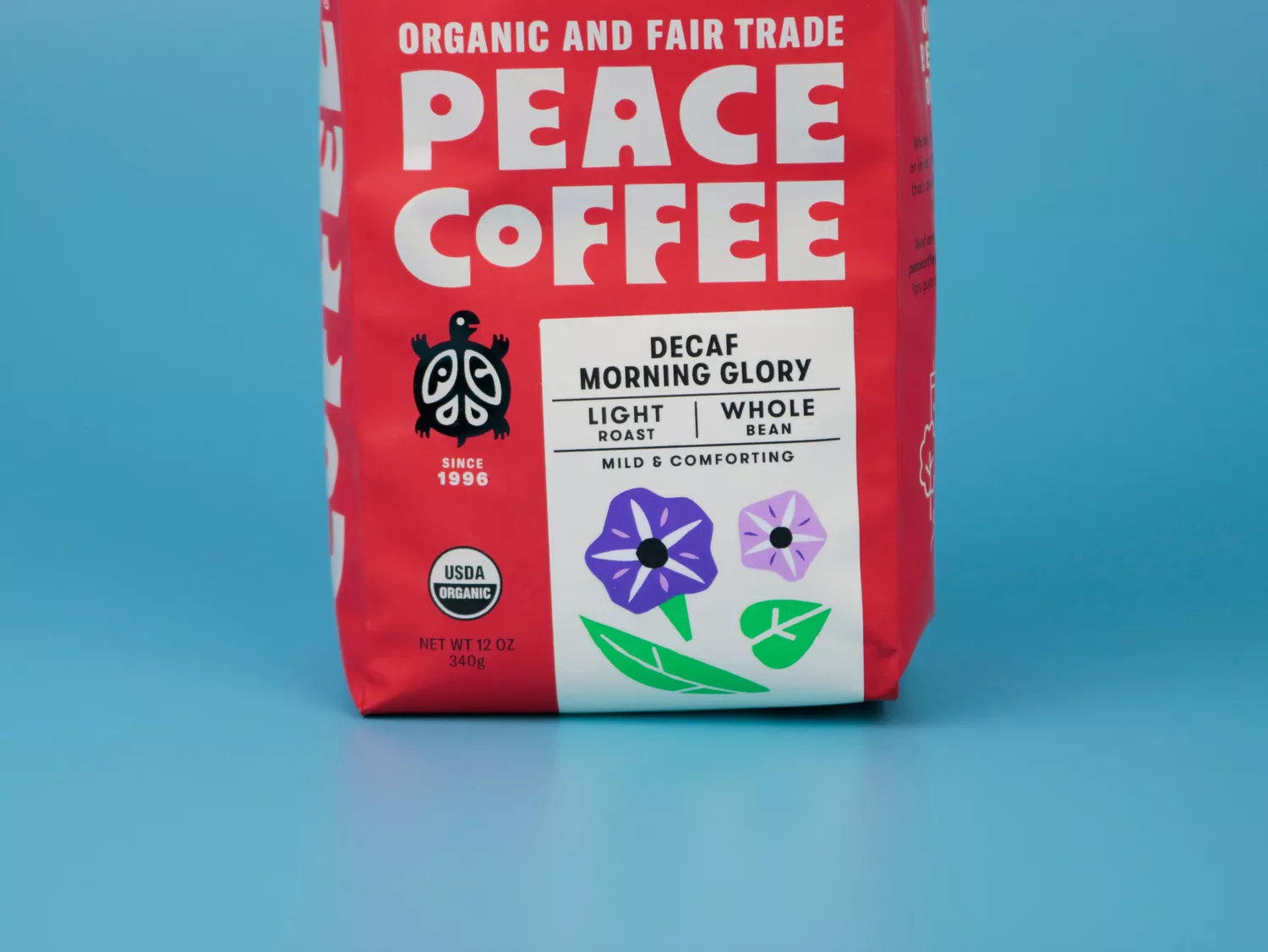
Serious Eats / Jesse Raub
Many of the coffees we tested are certified organic, Fair Trade certified, or even Rainforest Alliance certified. These labels ensure that the coffee meets the criteria for each certification standard, but there aren’t any certifications that follow through with how a coffee actually tastes. Some roasters, like Intelligentsia Coffee, Counter Culture Coffee, and Stumptown Coffee each have their own internal criteria for sourcing coffee that include coffee quality as part of their guidelines, but those aren’t independently verified by a third-party certifier. The main impact that certification has is that certified organic coffees can’t be decaffeinated through the use of solvents. That means if you’re on the fence about methylene chloride or ethyl acetate and the coffee label doesn’t list the decaffeination method, a certified organic label is something to look for.
Влияет ли декофеинизация на вкус кофе
Несомненно, процесс удаления кофеина влияет на конечный вкус напитка. Из кофейных зерен удаляется и некоторое количество других веществ. Даже если их пропало совсем немного, вкус напитка становится менее выраженным, букет упрощается. Если сорт до удаления кофеина имел не слишком выраженный вкус, то после обработки он станет совсем пресным. К тому же отсутствие кофеина часто приводит к уклону в кислотность.
Чтобы не было разочарования от покупки, не стоит экономить при покупке кофе декаф, ведь качественное зерно меньше страдает при обработке
И обязательно нужно обращать внимание на дату обжарки: у свежеобжаренного зерна вкус всегда ярче, что также ослабляет эффект от удаления кофеина. . Источникrbc.ru
Источникrbc.ru
How Is Decaf Coffee Made?
There are three main methods for removing caffeine from coffee. The most common is the direct contact method, which is the one Starbucks uses for almost all its decaf. In this method, the raw beans are treated with a solvent called methylene chloride which binds to the caffeine. When the coffee is roasted, both the solvent and the caffeine are burnt away. (The boiling point of methylene chloride is about 100 F and Starbucks roasts its coffee at 375 to 475 F.)
Fun Fact
Methylene chloride is also used in brewing beer—it helps to release some of the flavor compounds in the hops.
The Swiss water method involves soaking the raw beans in hot water, which extracts the caffeine from the beans. The water containing the caffeine is drained away, and the beans are then roasted. The drawback to this method is that in addition to the caffeine, it removes a great deal of the flavor from the beans as well. Which makes sense, since by soaking the beans in hot water, they’re basically brewing a pot of strong coffee, then pouring it away and reusing the beans.
Finally, there’s the so-called “natural” method, where the beans are treated with pressurized liquid CO2. Starbucks uses this method for its decaf Sumatra blend.
Что такое кофеин
Кофеин — это природный алкалоид, который встречается в чае, кофе и орехах кола. Он служит для этих растений защитой, отпугивая насекомых. Кофеин обладает бодрящим и возбуждающим действием — он ускоряет пульс и стимулирует нервную систему.
Для взрослого здорового человека небольшая доза кофеина опасности не представляет. Чашка кофе за завтраком или по дороге на работу, давно стала одним из самых популярных способов взбодриться по утрам
Однако употреблять кофеин детям, беременным женщинам и людям с нарушениями работы нервной системы надо с осторожностью. Поэтому о способах удаления кофеина из зерен задумались много лет назад
Реклама на РБК rbc.group
Польза и вред кофе для организма: исследования ученых и советы врачей
